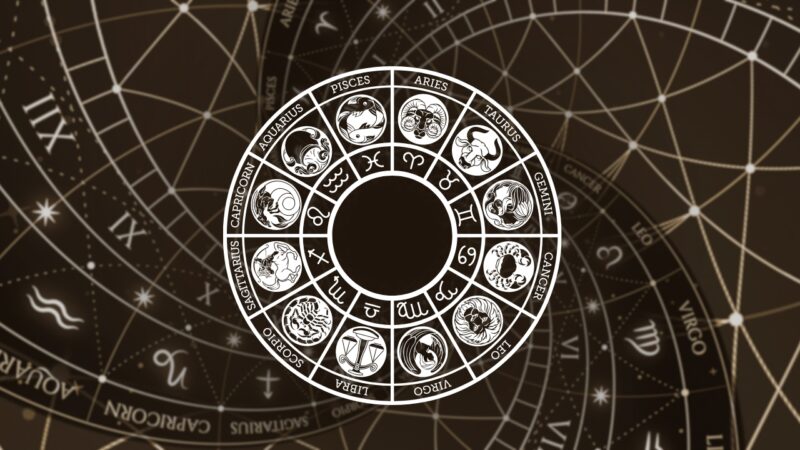Astrology, the ancient study of celestial bodies’ influence on human affairs, has been a source of fascination and debate for centuries. It offers a unique perspective on life, providing insights into personality, destiny, and relationships.
One of the key elements in astrology is the natal chart, also known as a birth chart or horoscope. This article aims to delve into the various types of natal charts and their significance in understanding one’s life journey.
The Unchanging and the Evolving
An intriguing aspect of natal charts is their permanence and evolution. The positions of the celestial bodies at the time of our birth, as represented in the natal chart, remain constant throughout our lives. This unchanging aspect of the natal chart represents our inherent potential and the basic blueprint of our life.
However, as the planets continue their cycles around the sun, they form various angles (known as “transits”) to their positions in our natal chart. These transits, which are continuously evolving, symbolize current influences and challenges. They can trigger changes, mark important events, and indicate trends in different areas of our life.
Types of Natal Charts
While the term “natal chart” is commonly used, there are actually several types of charts in astrology. Each serves a different purpose and provides unique insights into an individual’s life.
The Birth Chart
The birth chart, also known as the natal chart, is the most common type. It is based on the exact time, date, and location of an individual’s birth. The birth chart is a map of where all the planets and astrological points were in their journey around the Sun at the exact moment you were born. These charts are used to analyze personality traits, predict future events, and even determine compatibility with others.
The birth chart is divided into twelve sections, known as houses, each representing a different area of life, such as self, home, relationships, career, etc. The planets in the chart, depending on their house and sign placement, provide detailed insights into various aspects of an individual’s life.
The Transit Chart
Transit charts are a type of natal chart that shows where the planets are at a current or future time, compared to the positions of the planets at the time of your birth. These charts are used to predict how current planetary movements will affect you. For example, transit charts can show phenomena like Mercury Retrograde and how it might impact your life.
Transits can be short-term (such as the Moon’s transits which change every couple of days) or long-term (like Pluto’s transits which can last for many years). They can indicate periods of challenge, growth, or change, and can be used to identify optimal times for various activities or decisions.
The Synastry Chart
Synastry charts are used in relationship astrology to compare the planets in the natal charts of two people. These charts can reveal areas of harmony and conflict and can provide insights into the dynamics of the relationship. Understanding these dynamics can help couples work through challenges and enhance their relationship.
In a synastry chart, the planets of one person are placed in the houses of the other person’s chart, and vice versa. The aspects (angles) formed between the planets of the two charts are then analyzed to gain insights into the dynamics of the relationship.
The Composite Chart
Composite charts are another tool used in relationship astrology. Unlike synastry charts, which compare two natal charts, composite charts create a single chart that represents the relationship itself. This chart is calculated by finding the midpoints between the same planets in each person’s natal chart. The resulting composite chart provides a unique view of the relationship as a whole, its strengths, challenges, and potential.
Composite charts can reveal the purpose of a relationship, the lessons to be learned, and the challenges to be faced. They can provide insights into the dynamics of the relationship, including how the couple interacts and how they appear as a unit to the outside world.
FAQs

How does the time of birth affect the natal chart?
The time of birth is crucial in creating an accurate natal chart. It determines the Ascendant or Rising Sign, which is the sign that was on the eastern horizon at the time of birth. The Ascendant is important because it sets the houses or sectors of the chart, which represent different areas of life. A difference of a few minutes can change the Ascendant and house placements, altering the interpretation of the chart.
Can natal charts help in understanding my career path?
Yes, natal charts can provide insights into your career path. The Tenth House, its ruler, and any planets it contains can give clues about your career potential. Additionally, the placement and aspects of Saturn can indicate your work ethic and areas where you might face challenges or excel in your career.
What is the significance of the Moon sign in a natal chart?
The Moon sign in a natal chart represents your emotional nature, instincts, habits, and unconscious reactions. It can reveal how you process emotions, your needs for emotional security, and how you express care for others. It also plays a significant role in your relationships, particularly with your mother or significant female figures in your life.
Can natal charts change over time?
The natal chart itself, which is a snapshot of the celestial bodies at the moment of your birth, does not change. However, the way the current positions of the planets (transits) interact with your natal chart changes over time. These transits can activate different parts of your natal chart, leading to different experiences and phases in your life.
What is a retrograde planet in a natal chart?
A retrograde planet in a natal chart means that the planet appeared to be moving backward in the sky at the time of your birth. This is due to the relative positions and movements of the Earth and the planet in their orbits. In astrology, a retrograde planet can indicate that the energies of the planet are expressed more inwardly or uniquely.
Conclusion
Natal charts, in their various forms, offer a fascinating lens through which to view our lives and relationships. They provide a unique blend of science and spirituality that can help us understand ourselves and our place in the cosmos. Whether you’re seeking self-understanding, relationship insights, or future predictions, natal charts can provide valuable insights.






